
Are House Spiders Harmful?
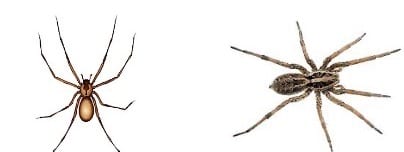
Did you know that about one-quarter of the population has a non-pathological fear of spiders? This means that the fear is not clinically significant, but will cause aversion.
It’s no surprise that so many people avoid and fear spiders. They have far too many legs and eyes, they’re fast, and they’re potentially deadly.
Encountering spiders in the house can be scary and overwhelming. Sure, some spiders are helpful in eating mosquitoes and other pests, but what if it’s a venomous spider? What if it’s a sign of a further spider infestation?
If you’ve ever wondered about your house spiders or if a spider infestation is your idea of a nightmare, read on. In this article, we’ll be discussing whether or not spiders in the house are harmful, and what to do about them. If you need professional spider removal services, click below.
The American House Spider
The American house spider is the most common spider in the home. It’s brown or tan with darker brown splotches on the sides. They’re about the size of a nickel, including leg length.
They’re known for spinning cobwebs in areas with little traffic. If your attic or basement is full of small hanging webs, it’s likely these spiders.
These spiders have a rounded abdomen, which can look intimidating. Luckily, these spiders are harmless! They feed on small insects like flies, ants, and mosquitos.
The Long-Bodied Cellar Spider
These spiders look very similar to daddy longlegs. They are of a similar size and shape and have the same signature long legs.
However, the body is longer and thinner. While a daddy longlegs has a round, ball-like body, the cellar spider has a body that’s about the shape of a sunflower seed.
This is another cobweb spider, building webs in basements, crawl spaces, and anywhere that’s dark and undisturbed.
The cellar spider is not harmful and favors eating small insects. Since we’ve brought it up, the daddy longlegs is not harmful either. In fact, the daddy longlegs lacks the fangs to even attempt a bite, so they’re completely safe.
The Jumping Spider
These spiders are easily identifiable by their strange movement patterns. Their name is fitting because they move in quick erratic jumps. The color patterns of these spiders vary greatly, but they are all a similar compact shape.
Their eyes are more visible than other spider species, and they’re slightly hairy.
These spiders can bite, although they prefer not to. Because they’re so quick, they’d rather seek escape than confrontation. However, if they do bite it’s similar to a minor bee sting.
If allergic, the bite might result in a bit of a reaction, but generally, the bite is harmless and fades quickly.
The Brown Recluse Spider
The brown recluse used to be a native of hot and humid states, but can now be found all over the country. They can be found in basements, attics, and crawl spaces.
The coloring is brown or grayish, and the body is about 1/3 of an inch long. The spider has a signature violin-shaped dark brown marking on the body.
The brown recluse is very dangerous. While they will avoid biting if they can, they will bite if crushed or cornered. The initial bite is painless, but the bite area will eventually blister and the venom can cause a serious reaction.
Brown recluse venom has a cytotoxin that can cause necrosis at the bite site, causing the tissue to decay. Other side effects include chills, fever, nausea, and a rash. The venom can enter the system, causing organ failure, seizures, and death.
While children tend to have larger reactions to spider bites, even healthy adults can suffer life-threatening complications.
The Wolf Spider
Wolf spiders are often mistaken for brown recluse spiders, due to the similar patterning on their body. However, they tend to be more black and grey and less brown.
They are larger than the other common household spiders and are therefore more intimidating. They often create large, erratic webs that culminate in a small hole that serves as their home. They wait in the hole for an unsuspecting bug to land and get stuck in the web, and then come out to wrap it up for later.
Despite their intense appearance, these spiders are harmless to humans. However, anyone allergic to wolf spiders might experience a reaction that needs medical treatment.
The Black Widow Spider
This spider used to be rare but is now commonly found across the United States.
They like to hide in woodpiles, furniture piles, or other dark undisturbed areas. They create a haphazard web and hide in a small corner waiting for prey.
The black widow is very easy to identify due to its signature markings. The spiders are black, with a large rounded abdomen. When flipped over, they feature a red hourglass on the abdomen.
These spiders generally only deliver defensive bites and aren’t very aggressive, but they can be easily overlooked and stepped on or accidentally grabbed.
The area becomes painful and inflamed within a few minutes of the bite, and fang marks are evident. Neuromuscular symptoms begin within an hour with muscle pain and cramping.
Black widow venom will radiate from the bite site before entering the system. For example, if bitten on the finger, the venom will start with the finger and hand before spreading to the arm and trunk. When the venom enters the system, nausea, vomiting, pain, and muscle rigidity are the primary symptoms.
While the bite requires medical treatment, there are rarely lasting effects or life-threatening complications.
Pest Control Services
Maintaining good cleanliness and limiting bugs in the home is a great way to prevent spiders. However, if you see any dangerous spider or any spider you’re not sure about, it’s best to call spider removal services to put an end to your spider problem.
While some amount of spiders is helpful for mosquitoes, having a spider infestation is a serious pest problem. This is especially true when dealing with harmful or venomous spiders. Their bites can kill pets and cause serious reactions in children, the elderly, or immunocompromised.
Take Control of Your House Spiders Today
It’s best to think of house spiders as guests. With a few harmless house spiders, you can form a symbiotic relationship and enjoy mosquito-free living. With too many uninvited spiders or dangerous spiders, your health and family could be at risk.
Remember, if you’re not sure about a spider you’re looking at, it’s better safe than sorry. It only takes a few minutes to call for a consultation for your spider problem, so don’t hesitate to reach out to us for any spider or pest questions or concerns!

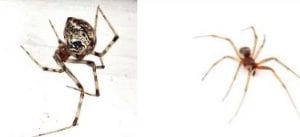
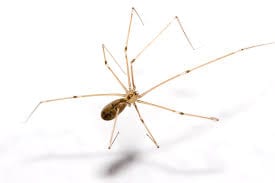
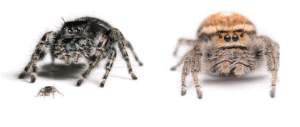


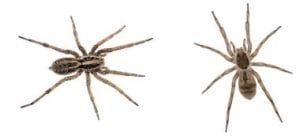
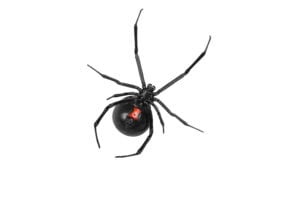
Leave a Reply